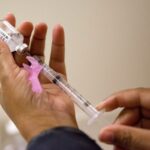I just walked past a Chinatown restaurant yesterday where a health inspector was leaving with clipboard in hand. That familiar yellow DineSafe sign would soon follow, but what really happens behind those kitchen doors most Torontonians never see?
This week’s health inspection reports reveal a concerning pattern across several Toronto eateries. At King Slice on St. Clair Avenue West, inspectors discovered crucial temperature violations – potentially hazardous foods stored in the danger zone between 4°C and 60°C where bacteria multiply rapidly. The pizza joint received a conditional pass, requiring immediate corrective action.
“Temperature abuse remains the number one risk factor in foodborne illness outbreaks,” explains Sylvanus Thompson, Associate Director of Toronto Public Health’s Food Safety Program. “When certain foods sit in that danger zone for more than two hours, it creates perfect conditions for pathogens to thrive.”
The inspection reports paint a picture of Toronto’s diverse food landscape – from upscale downtown restaurants to neighborhood staples. Popular Greek restaurant Mezes on Danforth Avenue faces similar challenges after inspectors found inadequate pest control measures and improper handwashing facilities. The establishment must address these issues before their follow-up inspection next week.
According to Toronto Public Health data, the city conducts approximately 17,000 food safety inspections annually across its 17,000 food establishments. Last year, about 89% of inspected establishments received a pass, 10% conditional passes, and roughly 1% were shuttered for critical violations.
For Parkdale resident Maria Chen, these inspections provide essential peace of mind. “I check DineSafe ratings before trying new restaurants,” she tells me while browsing lunch options near her workplace. “After my friend got food poisoning last year, I’m much more cautious about where I eat.”
The system uses a three-tier approach: green “Pass” signs indicate minor or no infractions, yellow “Conditional Pass” means significant violations requiring immediate correction, and red “Closed” signs result from health hazards requiring immediate closure. While inspections typically occur one to three times yearly, establishments with conditional passes face more frequent monitoring.
Toronto’s transparency approach stands in contrast to some other Canadian municipalities. While Montreal and Vancouver also conduct regular inspections, their public disclosure systems differ significantly. Toronto’s color-coded window signs provide immediate visual confirmation for diners – something Montreal implemented only recently and in more limited fashion.
“The publicly visible aspect of DineSafe creates accountability,” notes Dr. David McKeown, former Toronto Medical Officer of Health who helped implement the system. “Restaurants know customers see these grades, which encourages compliance even between inspections.”
Several establishments received conditional passes this week, including Pho Hung on Spadina Avenue for improper food handling techniques and Rol San dim sum restaurant for inadequate sanitizing practices. Follow-up inspections typically occur within 24-48 hours for serious infractions.
The full inspection reports – available through Toronto Public Health’s DineSafe portal – reveal more detail than the window signs alone. Infractions fall into three categories: crucial (posing immediate health hazards), significant (potential health risks), and minor (minimal risk but below standards).
Some restaurant owners feel the system, while necessary, can sometimes be punitive. Ahmed Laroui, who runs a small North African cafe in Kensington Market, faced a conditional pass last month for a broken refrigerator thermometer.
“We fixed it immediately, but that yellow sign stayed up for three days until reinspection,” Laroui explains. “Those were slow days because people see yellow and assume the worst.”
Food safety experts counter that temporary business impacts are secondary to public health protection. Toronto Public Health estimates the city experiences approximately 137,000 cases of foodborne illness annually – many preventable through proper food handling.
“Most violations we see are fixable with better staff training and management oversight,” says Thompson. “It’s rarely malicious – it’s about building consistent safety cultures in busy environments.”
For consumers navigating Toronto’s restaurant scene, health inspector Jim Chan, now retired after 36 years with Toronto Public Health, offers practical advice: “Look beyond just the color of the sign. Check the inspection date and the actual infractions online. A single conditional pass might be an anomaly, but repeated issues suggest systemic problems.”
As Toronto’s food scene continues evolving with new cuisines and concepts, the inspection system adapts too. Recent updates include more detailed allergen requirements and enhanced focus on cross-contamination prevention.
The next time you’re deciding where to grab dinner in Toronto, that small sign in the window represents more than just regulatory compliance – it’s a window into the hidden workings of restaurant kitchens and a crucial tool for informed dining choices.






